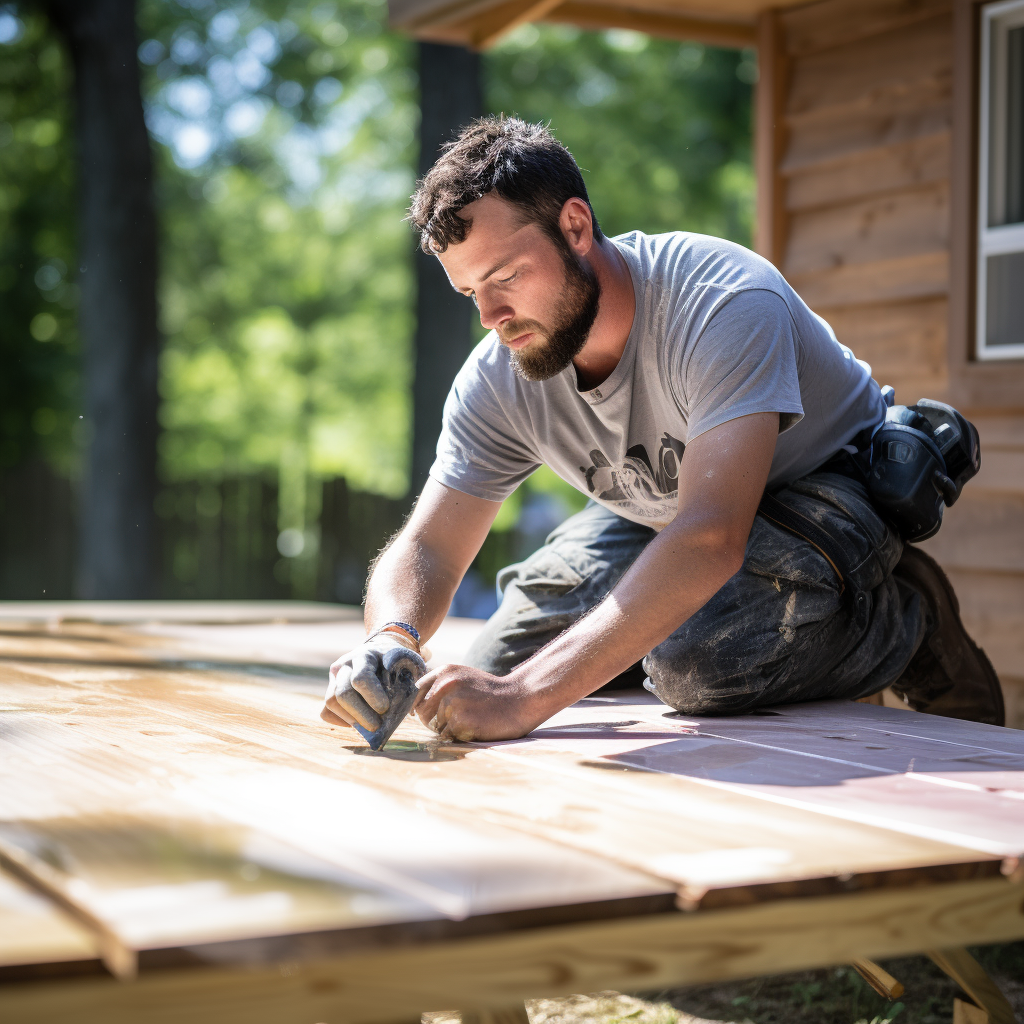If you want to use plywood for an outdoor project then you need to know how to make it withstand the elements.
With this, you need to know how to seal plywood for outdoor use.
This guide will walk you through the process, introduce you to various sealants, and help you avoid common mistakes.
You’ll also learn how to maintain and check your seal.
Key Takeaways
- Sealing plywood for outdoor use is crucial to protect it from moisture and weather conditions.
- There are different types of sealants available, including water-based, oil-based, and epoxy sealants, each with its own advantages and application techniques.
- Proper preparation of the plywood surface, such as sanding and cleaning, is essential before applying the sealant.
- Regular maintenance and checking of the seal on plywood is important to identify signs of wear or damage and reseal as needed to prevent further deterioration.
Understanding the Basics of Plywood and Its Need for Sealing
Before you can effectively seal plywood for outdoor use, you’ve got to understand the basics of plywood and why it’s important to seal it against the effects of weather.
Plywood’s manufacturing process involves layering thin plies of wood and bonding them with a strong adhesive. This gives plywood its renowned strength and durability.
Yet, its vulnerability to moisture and weather conditions necessitates sealing.
This untreated state is due to the plywood manufacturing process which doesn’t incorporate weatherproofing.
So, sealing your plywood is crucial if you want to use it outdoors. It not only extends the plywood’s lifespan but also maintains its aesthetic appeal.
Different Types of Sealants for Plywood
You’ll find water-based sealants, oil-based sealants, and epoxy sealants. Each type has its own sealant application techniques.
Water-based sealants are user-friendly, dry fast, and have a lower environmental impact.
Oil-based sealants, on the other hand, are more durable but take longer to dry, and may harm the environment if not properly disposed of.
Lastly, epoxy sealants provide the strongest bond and protection against moisture but are more challenging to apply and have a considerable environmental impact.
Detailed Guide for Sealing Plywood
Let’s dive into a detailed guide on sealing plywood, where you’ll learn the step-by-step process, from prep work to the final coat.
First, you’ll need to prepare the plywood.
Plywood Preparation Methods involve sanding the surface to remove any rough edges and cleaning it thoroughly. This preparation step ensures the sealant adheres properly.
Next, you’ll apply the sealant.
Sealant Application Techniques vary, but you’ll generally need a brush or roller. Apply the sealant evenly across the plywood’s surface, ensuring all areas are covered.
You’ll then wait for the first coat to completely dry before applying a second coat. This process may be repeated for additional coats, depending on your project’s needs.
Mistakes to Avoid When Sealing Plywood
When sealing plywood, you need to avoid common mistakes like not cleaning the surface properly, and failing to apply an even coat of sealant.
It’s crucial to understand how sealant selection errors and incorrect application techniques can impact the final result.
Here’s a table listing some common mistakes, their effects, and how to avoid them:
| Common Mistakes | Effects | Solution |
|---|---|---|
| Not cleaning the surface | Poor sealant adhesion | Thoroughly clean the surface before application |
| Sealant selection errors | Inefficacy in outdoor conditions | Choose a sealant suitable for outdoor use |
| Incorrect application techniques | Uneven coverage, drips, and bubbles | Apply evenly, let dry, then apply a second coat |
| Skipping sanding | Rough texture, poor finish | Always sand the surface before sealing |
Maintaining and Checking the Seal on Your Plywood
In the process of maintaining your plywood, it’s important to regularly check the seal for signs of wear or damage. This involves a thorough observation of your wood’s surface, looking for any indication of peeling, discoloration, or cracks.
It’s crucial to perform Seal Durability Testing, a procedure that assesses the longevity of the seal. This testing helps determine if the seal is still effective in protecting the plywood.
Additionally, it’s beneficial to have a Weather Impact Analysis conducted. This evaluation assesses the seal’s resistance to various weather conditions, such as rain, snow, and extreme temperatures. This analysis helps determine if the seal is adequately protecting the plywood from the elements.
If your seal shows signs of deterioration, it’s important to reseal it promptly. This will help maintain the integrity of the plywood and prevent further damage.


Leave a Reply